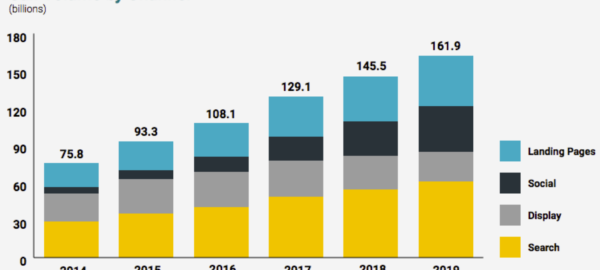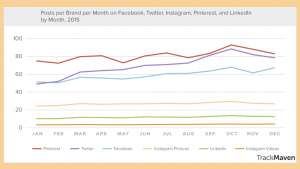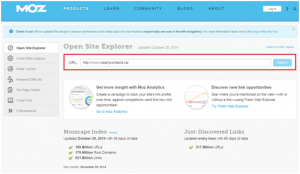There is a data struggle among marketing experts. When it comes to proving and improving ROI from their digital marketing channels, they lack ample data to be confident in their optimization decisions. In fact, 46% of B2B marketers state their top challenge is the difficulty of measuring ROI. In today’s digital marketing world, you’re probably already using LinkedIn to reach both B2C and B2B customers. And with over 460 million members, marketers realize they need to be able to measure every interaction. Thankfully LinkedIn has taken steps to meet the conversion tracking needs of marketers. But marketers must also be aware of a conversion type that’s often forgotten.
LinkedIn has updated their Campaign Management tool to measure leads, sign-ups, downloads, and purchases made through sponsored content and text ads. This update will equip marketers with deeper insight into the performance of their LinkedIn campaigns: conversion counts, cost-per-conversion, conversion rate and more – and whether conversions came from desktop or mobile. These conversion tracking features are already available to advertisers via LinkedIn’s Campaign Manager and it’s two certified ad partners, AdStage and 4C. It will slowly roll out to even more partners through LinkedIn’s ads API.
While this update to LinkedIn’s conversion tracking is greatly beneficial to B2B marketers, if they’re using it to understand which content is driving engagement then they’ll need to ensure they’re capturing every conversion – both online and offline – to optimize their campaigns. Thanks to a shift in how users access LinkedIn, offline conversions must not be overlooked.
Mobile Plays a Big Role
LinkedIn is mobile: their audience is going mobile as well as their revenue. 50% of users are mobile, and their mobile revenues are quickly climbing. eMarketer estimates LinkedIn saw the fastest US mobile ad revenue growth rate over any company last year: it was a staggering 170%. In 2016, it has aligned more with the national average of 35.4% (just behind Facebook and Twitter).
With half of LinkedIn’s audience mobile, and the rapid growth in mobile ad dollars spent on LinkedIn, marketers need to ensure they’re doing everything they can to understand and improve the performance of their social campaigns. That’s where LinkedIn’s new conversion tracking features can help.
LinkedIn B2B Ads Have Strong Conversion Rates
According to HubSpot, the average conversion rate from LinkedIn ads is 6.1%. This is significant: the average conversion rate for B2B advertisers on Google search is only 2.58%.
As a result, traffic is being driven to your landing pages. You’ll want to ensure your ads are optimized to drive mobile engagement and your landing pages are optimized for mobile. This involves taking into account how a smartphone user would interact with your content (hint: many call to convert from a smartphone).
In fact, calls from mobile social advertising are expected to grow nearly 200% between 2016 and 2019. Smartphones have changed how consumers engage with brands and businesses online. They’re calling by the billions, which makes offline conversions just as important as impressions and clicks. Don’t assume your consumers only want to engage online from your social media marketing. Offer them the option to call: try including a prominent number on every page of your website. Take the focus away from form fills.

With LinkedIn’s conversion features already live to advertisers and select partners, once it rolls it through the API to additional partners, it’s only a matter of time before call conversions become another conversion metric. They’re already being recognized by other platforms, such as Facebook, Twitter, Google, and more. It will prove beneficial for marketers to stay up-to-date on offline conversion trends.
You can learn more about accounting for call conversions from social media in this helpful Facebook guide. To maximize your mobile LinkedIn ad spend and increase conversions, you’ll need to account for the phone calls your ads drive from mobile landing pages, the same way you account for clicks. Interested in learning more about call attribution? Download the Digital Marketer’s Guide to Call Attribution.
Digital & Social Articles on Business 2 Community(51)
Report Post






